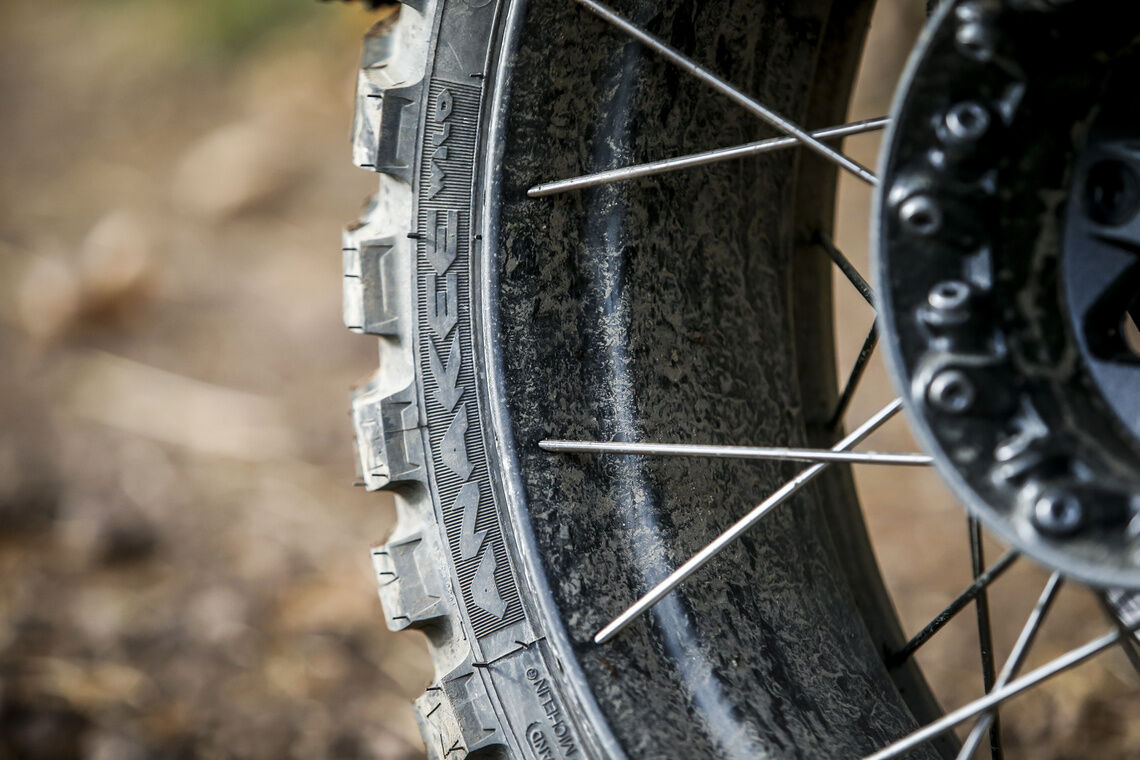How to choose a motorcycle inner tube
When do you need an inner tube?
The function of an inner tube is to ensure that the tyre/wheel assembly is sealed. To find out if you need an inner tube, start by determining whether your tyre is Tube Type (TT) or Tubeless (TL).
How do you know if your tyres are TL or TT?
Tube Type tyres (TT)
These are tyres where the first layer of rubber on the inside is not airtight. They must therefore contain an inner tube to maintain pressure.Tubeless tyres (TL)
In tubeless tyres, the first layer of rubber is airtight. It is therefore not necessary to fit an inner tube to ensure the seal. However, there is an exception: if the rim is TT , an inner tube must be used.
Now examine your rims to determine whether they are TL or TT.
How do you know if your rims are TL or TT?
1/ Spoke rims
The spokes usually pierce the rim in the centre around the entyre circumference. And since these holes imply a lack of sealing, this type of rim is Tube Type (TT). It therefore requires an inner tube.
However, there are rims with spokes that are fixed in other ways, in order to maintain the seal. This types of spoke rims are Tubeless (TL) and not Tube Type (TT).


Rim band for spoke rims
When the spokes pierce the rim, the inside of the rim is not smooth. When riding, this can lead to overheating or to a hole in the inner tube. To avoid this, it is recommended that you use a rim band. This is a rubber accessory that covers the inner rim and protects the motorcycle inner tube or the MICHELIN Bib MousseTM from the spoke heads.
2/ Alloy rims
An Alloy rim is Tubeless (TL) as the sticks do not compromise the seal.
In summary
In this table, you will find what we have just explained:
| Alloy rim | |
TT tyre (Tube Type) | Inner tube* | Inner tube |
TL tyre (Tubeless) | Inner tube* | No inner tube |
*we recommend using a rim band
Important :
With an alloy rim and a Tubeless tyre, we do not recommend fitting an inner tube in the tyre. This is because in the event of a puncture, the tyre could be flattened instantly and suddenly.
Now you know if your tyres need an inner tube. If they do, let's see how to choose the right one for your type of vehicle or use.
Inner tubes for road motorcycle and scooter

There are two steps to choose the right inner tube for road usage:
The tube must match the size of your tyre. You should therefore start by identifying your tyre size to find the right inner tube.
Then choose the type of valve (if more than one choice is offered).
For the same size there is sometimes a choice between two types of valves:
straight valve
angled valve
How to choose a valve?
The shape of the valve determines how easy it is to pressurise the tyre. When access to the valve is difficult, for example because of the braking system, it may be easier to apply pressure with an angled valve rather than a straight valve.
Scooter inner tube (angled valve in this example)
Road motorcycle inner tube (straight valve in this example)
Inner tubes for off-road motorcycle

For off-road, we offer two types of inner tubes:
Reinforced: robust
Ultra-Heavy Duty (UHD): more robust (4mm of thickness)
Here the choice of valve does not matter as it is always straight.
Between the reinforced or Ultra-Heavy Duty (UHD) inner tube, you will be more secure in terms of resistance with the latter, provided, of course, that it exists in your dimensions.
Reinforced inner tube
Ultra-Heavy Duty inner tube (UHD)
The MICHELIN Bib MousseTM alternative
Since the MICHELIN Bib MousseTM contains no air, it is an excellent off-road choice for never having to worry about punctures. See the dimensions of the MICHELIN Bib MousseTM
Recommendations
We recommend that you use a new rim tape and a new inner tube every time you install a new tyre.
When to change the valve of a tubeless tyre?
- If you have a rubber valve: we recommend changing the valve at every tyre change.
- If you have a metal valve: we recommend changing the valve seal at every tyre change.
To obtain the accessories mentioned in this article, you can contact your dealer or a professional near you:

